I first met and wrote about Luis Díaz Díaz about ten years ago, during my first year living in Vigo. His quietly lush photography was focused on aspects of his Galician homeland at the time, and seeing the region through his work gave me unexpected insight into my new surroundings.
My favorite of these series — and the one that comes to mind now that we’re in Carnaval season — is Díaz Díaz’s Entroido project, which documents the extraordinary costumes and characters of Carnaval celebrations across Galicia. In these portraits, Díaz Díaz’s subjects sport their elaborate costumes alone, posing for the camera away from the raucous festivities and crowds that usually characterize the time. This stillness, along with the photographer’s careful attention to detail, allows us to appreciate the intricate beauty of each celebrant’s garb, and to notice small human details like a wedding ring or bunched socks. Overall, the pictures show the figures as both modern individuals and as the mythical types they represent.
I recently came upon Díaz Díaz’s work again while researching the Galician artist Isaac Díaz Pardo (1920-2012). What follows here is a short text I wrote about the photographer for my previous blog, Vigo Expo, in 2016 exploring Díaz Díaz’s Entroido series.
Luis Díaz Díaz (A Coruña, 1978) is a photographer based in Galicia and the founder of the international photography blog 30y3. Díaz Díaz completed his masters in photography in Madrid, an experience that helped the artist see his homeland with different eyes: “I saw things I hadn’t seen before, and different things drew my attention,” he says. Since returning to Galicia, Díaz Díaz began a series of projects exploring the land and its history through his own personal lens.
Carnaval is a Catholic holiday that marks a period of excess before the austerity of the Lenten season. With its relative geographic isolation and deep pagan roots, Galicia celebrates Carnaval (or Entroido as it’s known here) in its own way. The villages of Ourense in southeastern Galicia are especially famous for preserving rituals passed down from generation to generation, and for their unique and varied handmade costumes. During Entroido, the normal rules of daily life are thrown out: In some places, participants dance, feast, cross dress, fling dirt filled with ants at each other. Masqueraders like peliqueiros and cigarrones run in the streets, whipping spectators who get in their way. Entroido is a clear link to the past and to the possibility of disorder.
In 2007 and 2008, Díaz Díaz photographed Entroido participants in the Lugo and Ourense provinces of Galicia. Despite the chaotic context of the festivities, his portraits’ centered, focused compositions have an almost anthropological quality. They show subjects standing in fixed poses before backgrounds that range from urban to rural, but are mostly grey, rainy, and mossy (and therefore undeniably Galician).
In a sumptuous play of texture and color, Díaz Díaz details masqueraders’ costumes, props, and surroundings in exhaustive, high resolution. Seen together, the striking disguises create a sort of visual morphology of Entroido as it is celebrated in each town. The layers continue beyond the elaborate costumes; subtle shifts in subjects’ body language and individual details like jewelry and footwear emerge. Backgrounds made of granite blocks and green gardens would make the images hard to date if it weren’t for the plastic beer crates, cars, and cinder blocks in some photos.
The contrast between traditional garb and modern elements, between the quotidian and the unreal, reflect the heart of Entroido itself. Díaz Díaz’s still and studied portraits pause the onslaught long enough for us to look: there’s time to wonder about the people behind the costumes, and to consider the shape of the tradition as a whole.
(Vigo, 2016)

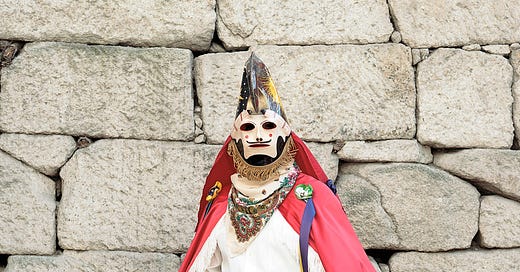


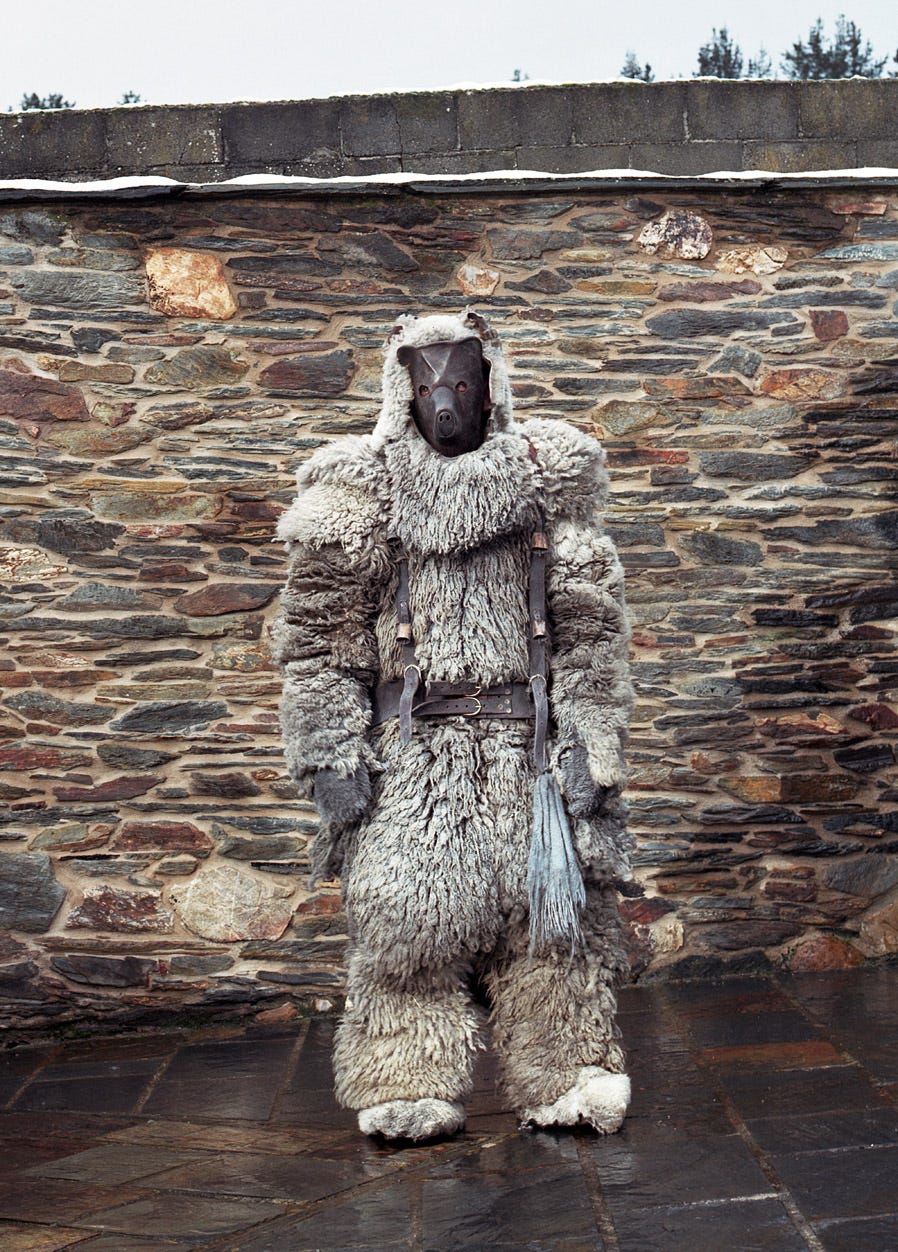
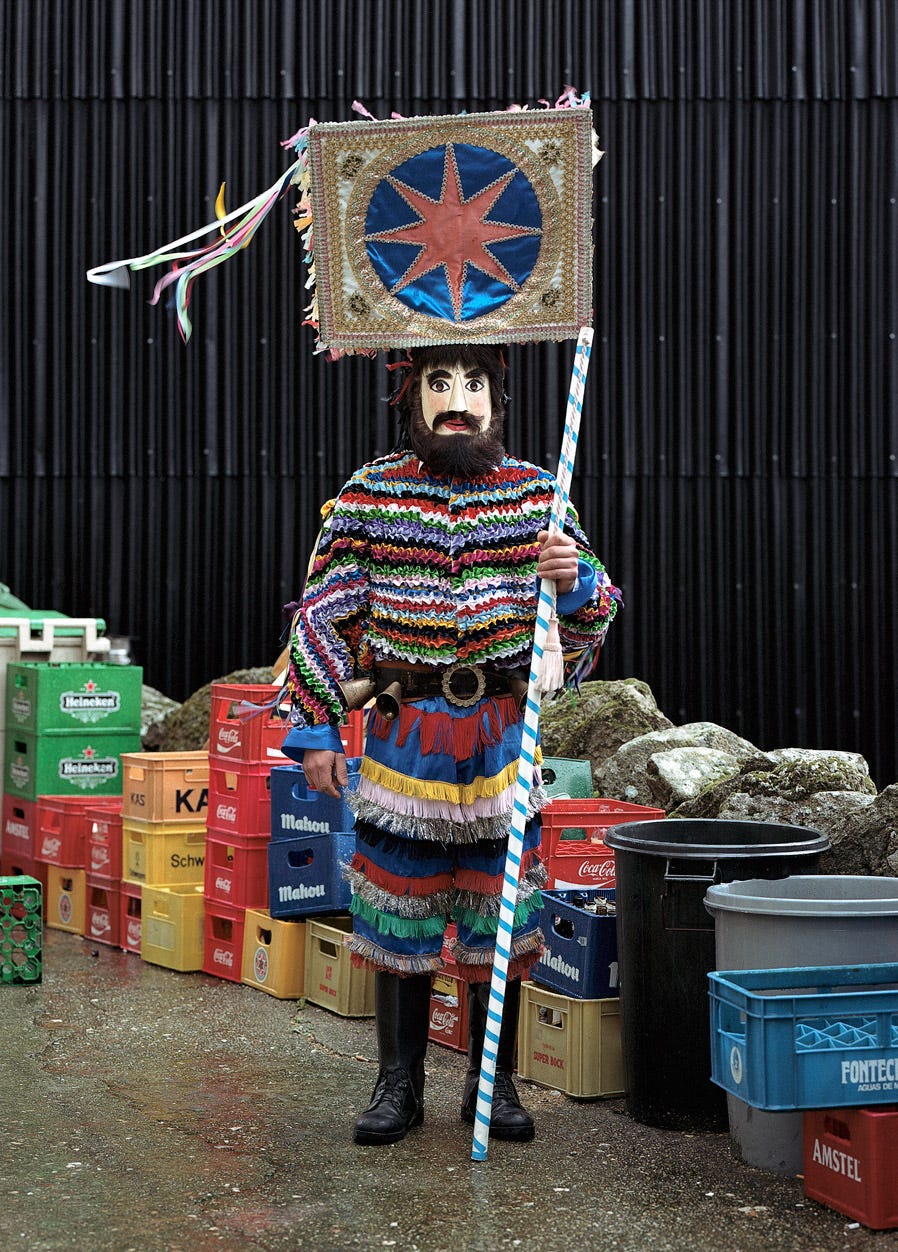

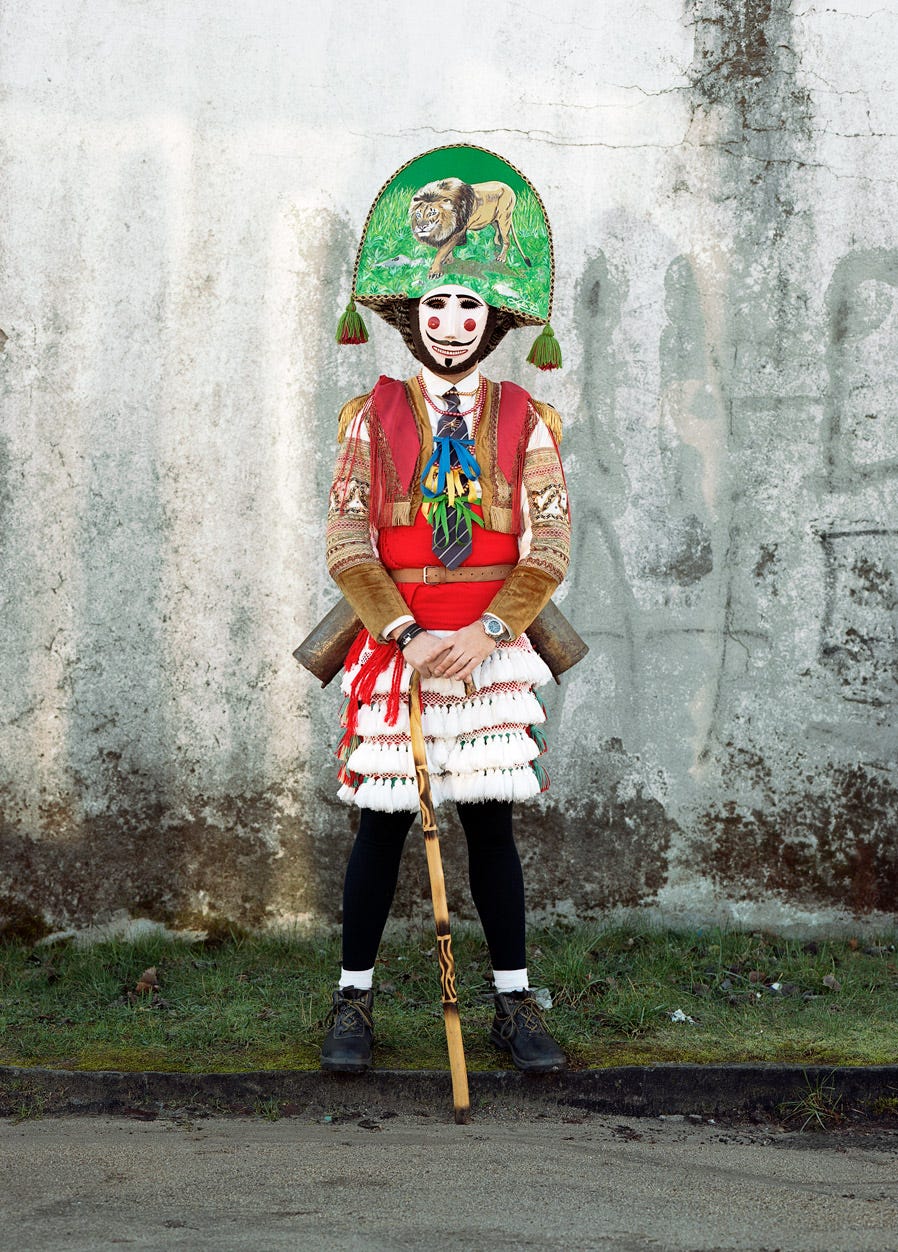

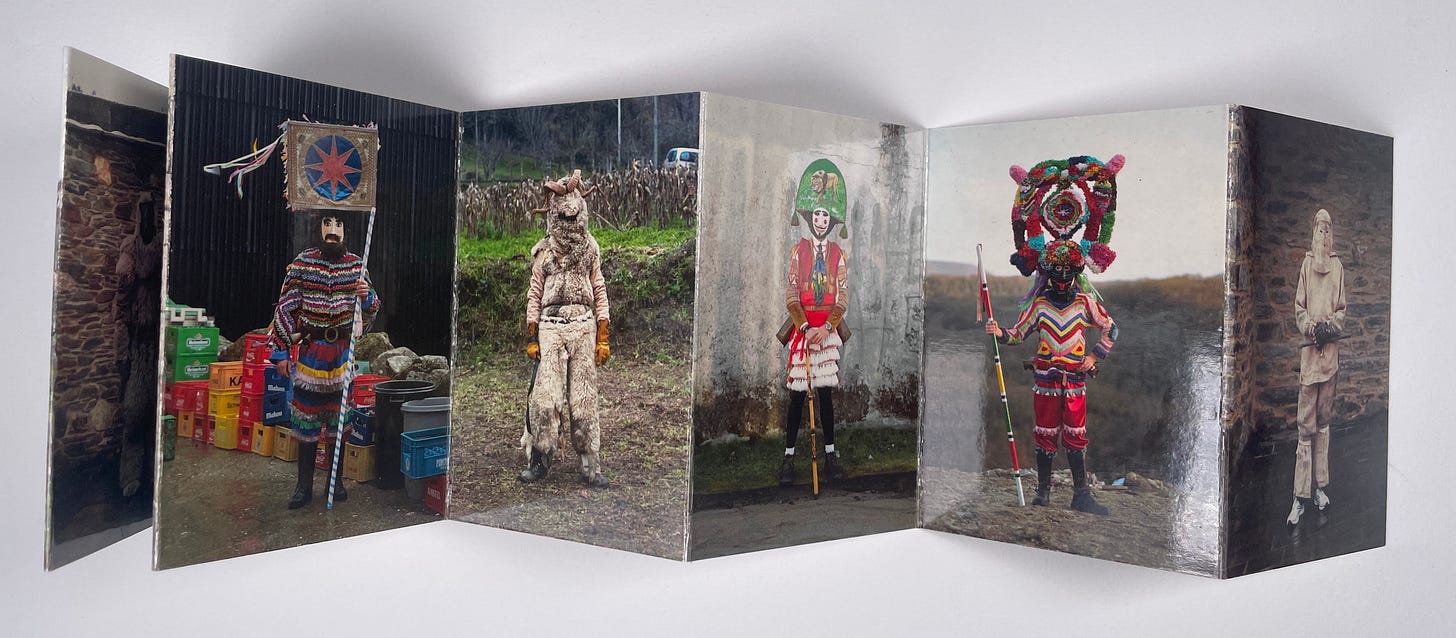
So interesting! Love learning about this and seeing the pics. Keep it coming please.